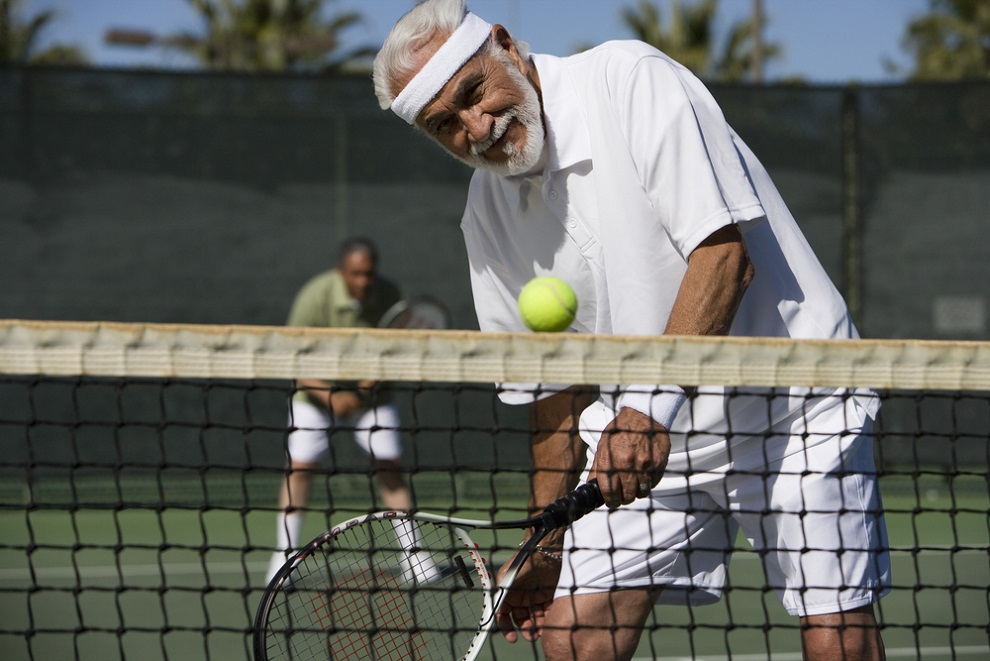Think of proper form as the cornerstone of your fitness journey—it supports every movement, prevents injury, and ensures maximum results.
Whether you're lifting weights, running, or doing yoga, the right posture and technique can make all the difference. Many beginners jump into workouts before understanding how to exercise correctly and without proper form and technique. The National Institutes of Health identifies poor form and overexertion as major contributors to gym injuries.
This oversight can lead to strain and injury, sidelining the fitness journey before it even begins. By focusing on proper form, you can protect your body and see better results over time. Stretching and improving flexibility also greatly reduces the risk of injury.
This article will explain proper techniques and guidelines to help you navigate your workouts safely. We'll cover everything from the importance of proper form to resistance training, cardio, and flexibility.

What Exactly Is a Proper Form?
Proper form refers to performing exercises for maximum efficiency and minimum risk of injury. It's about positioning your body correctly and moving with control. Proper form varies depending on the specific exercise but always aims for a balance between stability, movement, and precision.
When you use the proper technique in your exercise, you engage the correct muscle groups, prevent injury and unnecessary strain, and achieve better results. On the other hand, poor form leads to injury, muscle imbalances, hindrance in everyday activities due to pain, or a lack of progress in your fitness goals.
Importance of Body Alignment
Body alignment plays an important role in maintaining proper form during workouts. Good posture ensures that your muscles and joints work in tandem. For example, during a squat position, keeping your back straight and ensuring that your knees track over your toes helps distribute the weight evenly and prevents stress on your lower back or knees.
Proper alignment improves the efficiency of your movement, allowing you to lift heavier, run faster, or stretch deeper. It also reduces wear and tear on your joints, promoting long-term physical health and fitness.
Muscle Engagement and Core Stability
Effective workouts depend on engaging the right muscle group, particularly the core. Core stability is essential for all exercises, as it supports the spine and helps maintain balance. A strong core acts as a stabilizer, ensuring that movements like push-ups, squats, or deadlifts are controlled and balanced.
For instance, when doing a plank, engaging your core prevents your hip muscles from sagging, allowing your arms, shoulders, and legs to work efficiently. By focusing on engaging the right muscles and stabilizing your core, you can improve performance, reduce injury risk, and build functional strength.
Proper form and muscle engagement make every workout more effective.
Techniques to Perform Common Beginner Exercises With Proper Form
Learning proper form in basic exercises is important in avoiding injuries and maximizing results when starting a fitness journey. Mastering foundational movements like squats, push-ups, planks, lunges, and deadlifts helps build strength, stability, and balance while promoting safe workout habits.
Here is a breakdown of these key exercises, with tips on how to perform each one correctly.
Squats
Squats are an important exercise for building lower body strength. Here's how to perform squats properly:
- Stand with your feet shoulder-width apart, and keep your chest up and your back straight.
- As you lower yourself, imagine sitting back in a chair, ensuring your knees track over your toes but don't extend past them.
- Lower down until your thighs are adjacent to the floor, then push through your heels to return to a standing position.
Tip: Avoid letting your knees cave inward, which can strain your joints. Rounding your back is another common issue. Instead, maintain a straight spine throughout the squat movement. To avoid these, use a mirror to check your form or ask your trainer for feedback.

Push-ups
A properly executed push-up strengthens your chest, shoulders, and core. To perform push-ups correctly:
- Start in the plank position with your hands slightly wider than shoulder-width apart.
- Keep your body in a straight line from head to heels.
- Lower your body by bending your elbows, keeping them close to your sides. Your chest should come close to the ground without touching it.
- Return to the initial position by pushing back up, ensuring your core is tight to prevent your hips from sagging.
Tip: If a full push-up seems challenging, perform push-ups on your knees or against a wall to build strength while maintaining proper form.
Planks
Planks are excellent for core stability. Here's the proper way to perform planks:
- Begin by lying on your stomach.
- Elevate your body onto your forearms and toes, ensuring that your body remains straight from head to heels.
- Engage your core by pulling your belly button toward your spine, and avoid letting your hips sag or lift too high.
Tip: Dipping or raising your hips too high is the wrong form and can reduce the effectiveness of the plank and strain your lower back. Keep your spine neutral; if your form breaks, it's better to hold the plank for a shorter time with the correct form.

Lunges
Lunges focus on your legs and glutes while enhancing balance. To execute a lunge:
- Step forward with one leg, lowering your hips until both knees are bent at roughly 90 degrees.
- Keep your front knee in line with your ankle.
- Keep the back knee just above the ground.
- Press through your front heel to return to the starting position, then alternate legs and repeat.
Tip: Watch for knees going past the toes, which can strain your knee joint. Also, avoid leaning forward and keep your torso upright to maintain proper form. Holding onto a chair or using a wall for support can help beginners maintain balance until they build strength.
Deadlifts
Deadlifts strengthen the lower back, hamstrings, and glutes. To perform deadlifts:
- Stand with your feet hip-width apart and your knees bent slightly.
- Bend at the hips and drop your upper body while maintaining a straight back.
- As you reach the bottom, engage your hamstrings and glutes to pull yourself back up to a standing position.
Tip: Rounding your back is the most common mistake in deadlifts, and it can lead to lower back injury. Keep a neutral spine throughout the movement, and use your hips to drive the motion, not your back.
How to Identify and Correct Bad Form
Using the wrong form during exercise can hinder progress and increase the risk of injury.
One of the clearest signs of bad form is pain in areas that shouldn't be under strain. For example, lower back pain during squats or deadlifts often indicates poor posture or technique. Similarly, knee pain while lunging or running can signal misalignment.
Another sign of bad form is uneven muscle activation. If one side of your body feels significantly more fatigued or strained than the other, it is due to poor technique. Pay attention to discomfort, muscle imbalances, or awkward movements, which often indicate form issues.
Techniques to Self-Check Form
Self-checking your form can help you identify mistakes before they lead to injury. One of the easiest ways to do this is by using mirrors at home or gyms.
Watching yourself in a mirror while performing exercises like squats, push-ups, or deadlifts allows you to monitor your alignment and posture. For instance, you can see whether your back is rounding during a deadlift or your knees are tracking properly during proper squat form.
Another great tool is recording your workouts. Reviewing videos of yourself performing exercises can help you notice subtle mistakes like misaligned hips or improper core engagement. Watching the footage in slow motion helps pinpoint areas where your form breaks down, which can be harder to notice in real time.
Importance of Seeking Professional Guidance
While self-checking is helpful, seeking advice from a personal trainer or coach is invaluable, especially for beginners. Professional trainers can provide tailored feedback and corrections, helping you avoid long-term bad habits.
Even a few sessions in the gym with a trainer can significantly improve your form, ensuring you're performing exercises correctly from the start. Group fitness classes are another great option. Many gym instructors offer real-time corrections during the workout, giving you immediate feedback on your form. This guidance is useful if you're unsure about how to adjust your technique on your own.
Common Injuries from Poor Form
Exercising with poor form is one of the leading causes of workout-related injuries. Understanding the relationship between workouts and injuries and effective prevention strategies is essential for ensuring a safe and successful fitness journey.
Lower Back Pain
A common injury is lower back pain, often caused by improper posture during exercises like deadlifts or squats. Rounding the back or arching too much puts unnecessary pressure on the spine, leading to pain or long-term injury.
Shoulder Strain
Additionally, shoulder strain frequently arises from poor alignment during exercises such as push-ups or overhead presses. If your shoulders are not properly engaged or positioned, the surrounding muscles and tendons can become overworked, leading to strain or inflammation.
Knee Injuries
Another common concern is knee issues. These often occur during lunges and squats when the knees extend beyond the toes or cave inward. This improper alignment puts excessive pressure on the knees, potentially leading to pain or ligament injuries.

Techniques for Avoiding Form-Related Injuries
To prevent injuries, focus on form over intensity. Start with lifting fewer weights to perfect your technique before adding difficulty. Engaging the right muscle groups, especially your core, is crucial for maintaining balance and stability. For example, a strong core during deadlifts helps protect the lower back.
Moreover, warming up and stretching before exercise enhances flexibility and range of motion, significantly reducing the risk of injury. Staying hydrated plays an important role in maintaining energy levels and preventing cramps and dizziness.
Proper hydration helps regulate body temperature, lubricate joints, and transport nutrients, all of which contribute to optimal performance and overall health. Mayo Clinic emphasizes that even mild dehydration can lead to muscle fatigue and coordination issues, increasing your risk of injury.
Drink water before, during, and after your workouts. Consume at least 8 ounces of water for about 20-30 minutes before exercising, and continue sipping throughout your session. Consider using electrolyte drinks to replenish lost salts and minerals for longer or more intense workouts. Additionally, consume caffeine and alcohol moderately, as both can contribute to dehydration.
Finally, don't hesitate to seek professional guidance. Working with a trainer or attending a gym class can ensure you're performing exercises correctly. By prioritizing proper form and body mechanics, you can stay injury-free and make long-term progress in your fitness journey.
How to Improve Your Workout Form Safely
When progressing in your workouts, it's crucial to maintain proper form to avoid injury. One effective approach is to increase the intensity or weight gradually. A good guideline is to increase weights by about 5-10% at a time.
This allows your body to adapt without risking strain. Continuously monitor your form as you increase the load; if your technique starts to deteriorate, it's a sign that you may need to reduce the weight or slow down. Prioritize technique over intensity to ensure safe and effective progress.
The role of rest and recovery in your functional fitness routine is equally important. Your muscles need time to repair and strengthen after workouts, so include rest days in your schedule. This helps you maintain good technique and prevents burnout and injuries. Listen to your body; if you're feeling fatigued or experiencing any discomfort, don't hesitate to take an additional rest day and get adequate sleep.
Once you've mastered the fundamentals and your form is solid, you can gradually incorporate advanced exercises like HIIT. This could mean adding variations, increasing complexity, or trying new movements that challenge your strength and coordination.
However, ensure you still prioritize form over everything else. As you progress, keep reassessing your technique, and don't hesitate to seek feedback from trainers or experienced peers.
Conclusion
Maintaining proper technique in your workouts maximizes your results and significantly reduces the risk of injury. As a beginner, it's especially important to prioritize form over intensity. Focusing on technique allows you to build a solid foundation for your fitness journey.
Regularly check your posture and alignment to stay consistent and mindful during workouts. Additionally, don't hesitate to ask for guidance from trainers or experienced friends. Progress takes time, and grasping the fundamentals will set you up for long-term success.

Get TRT Online
Optimize Your Hormones





